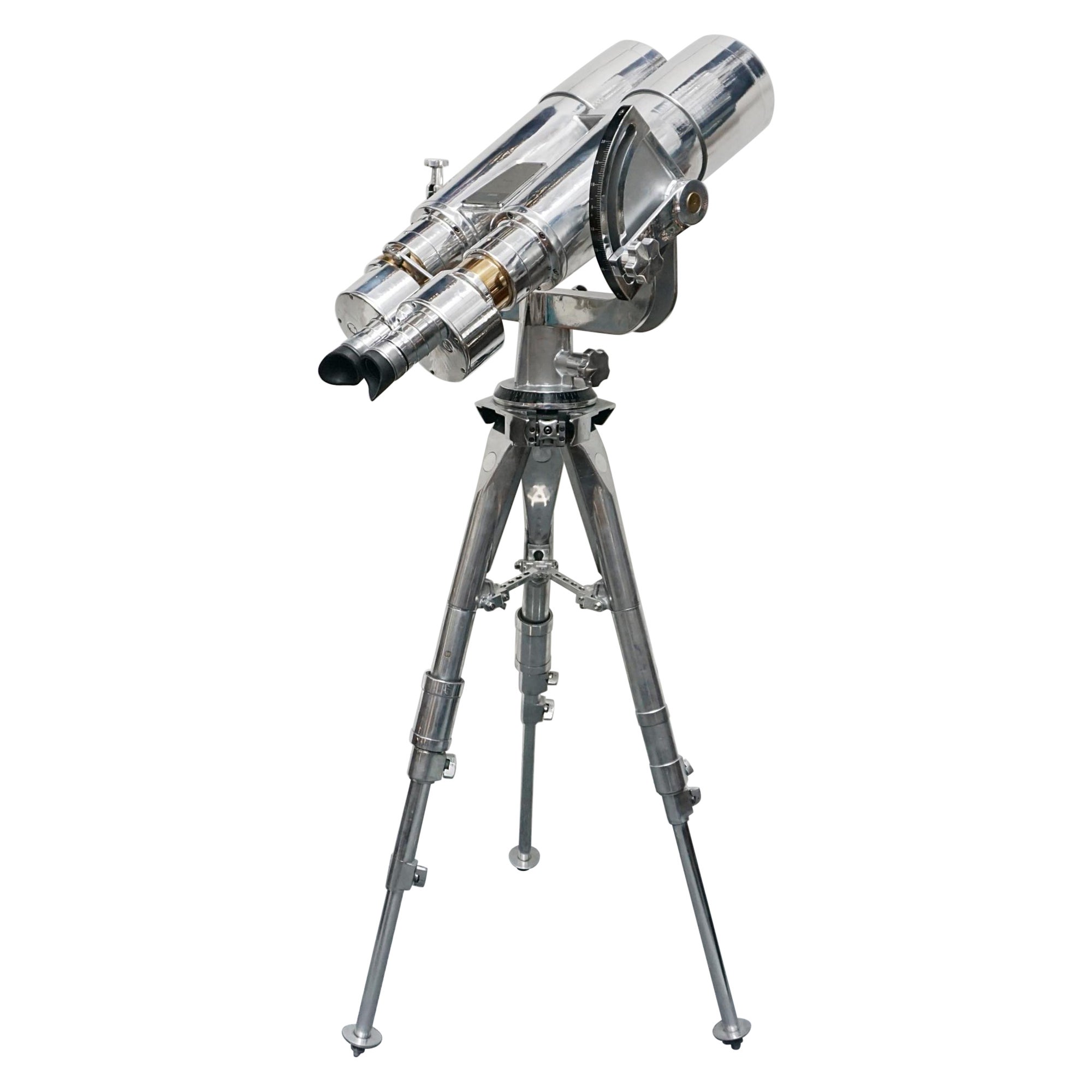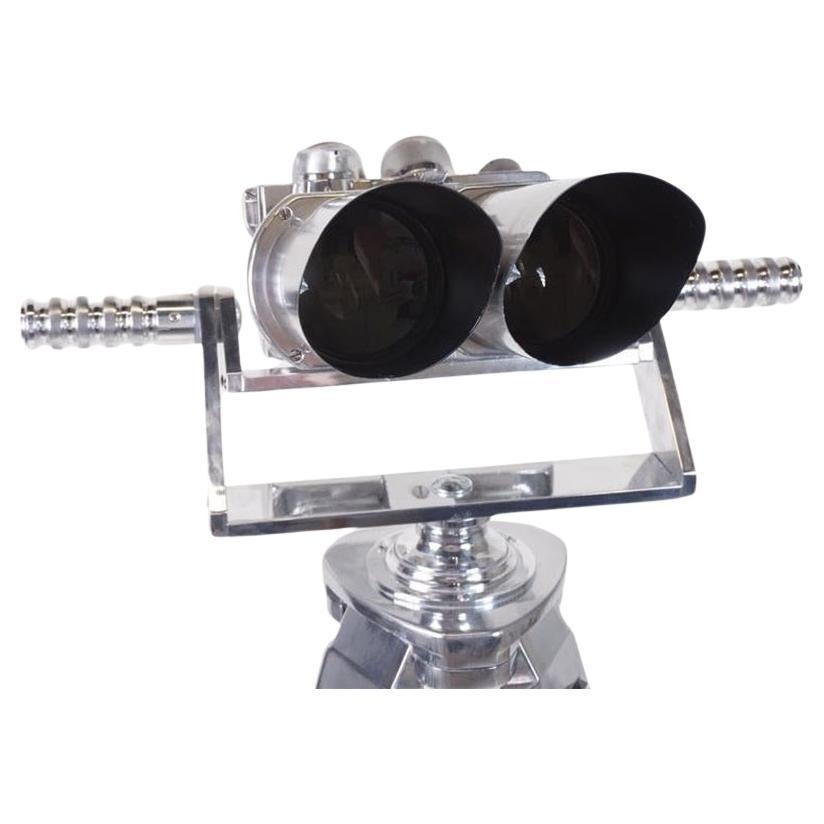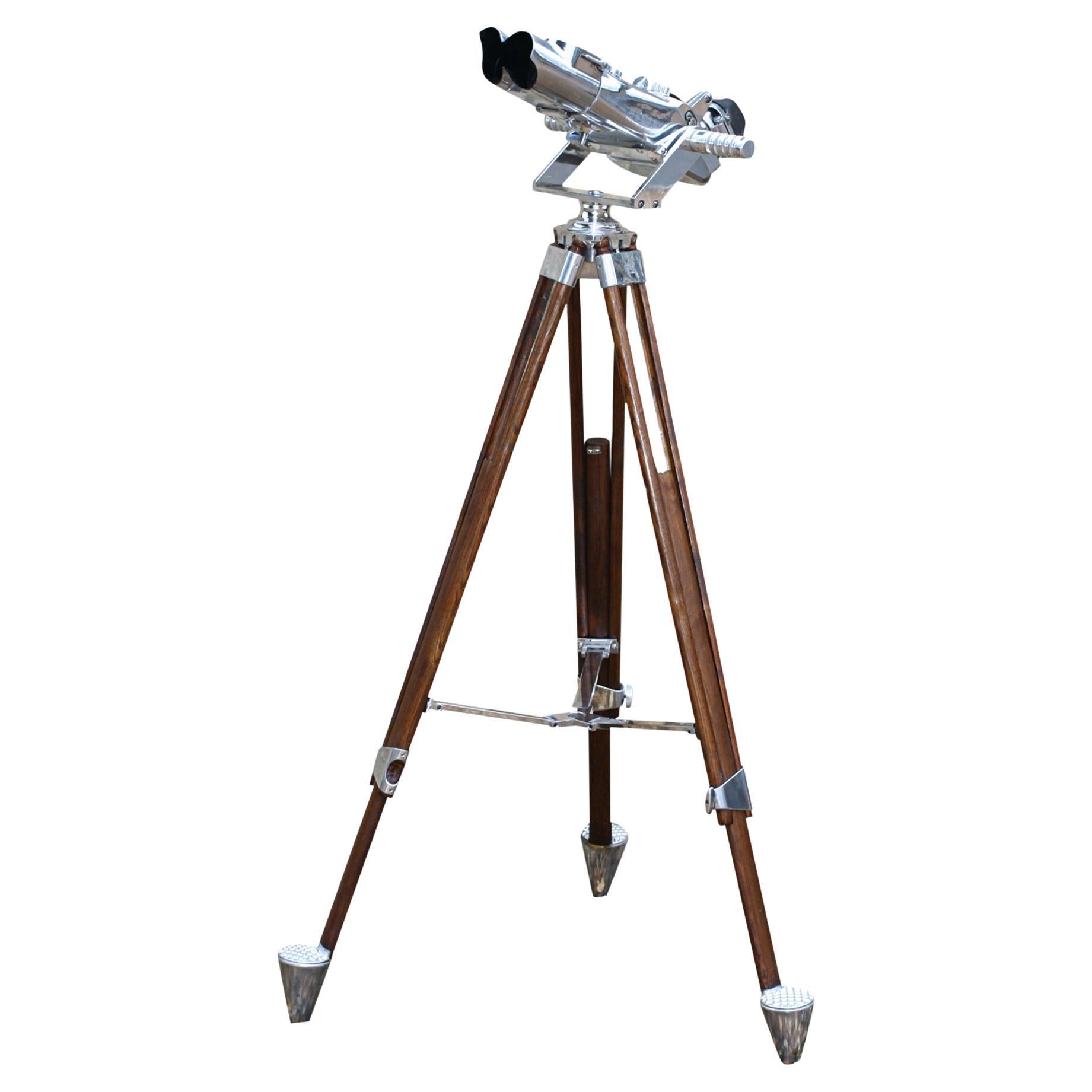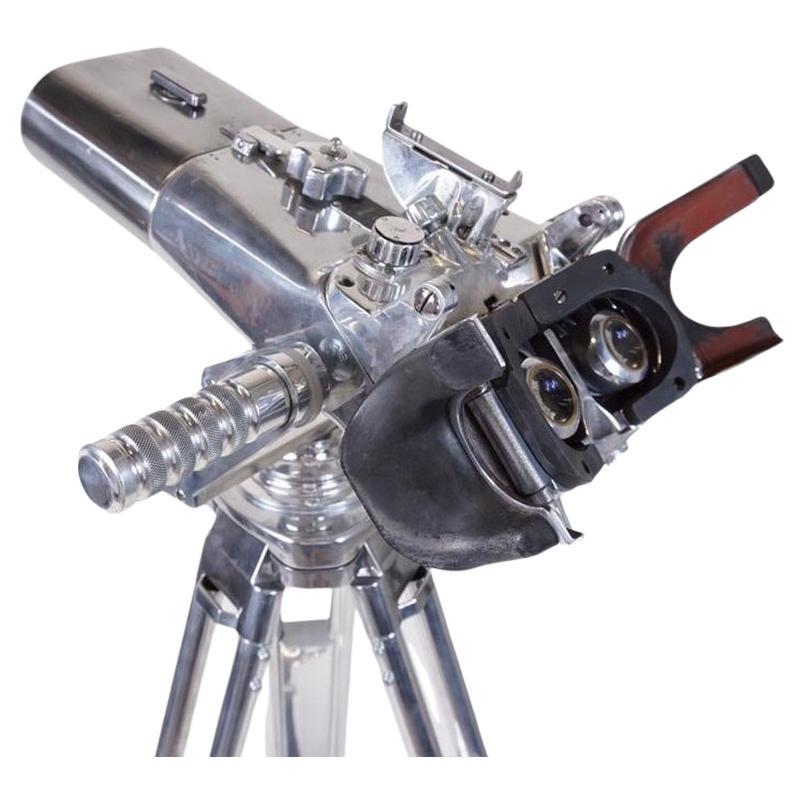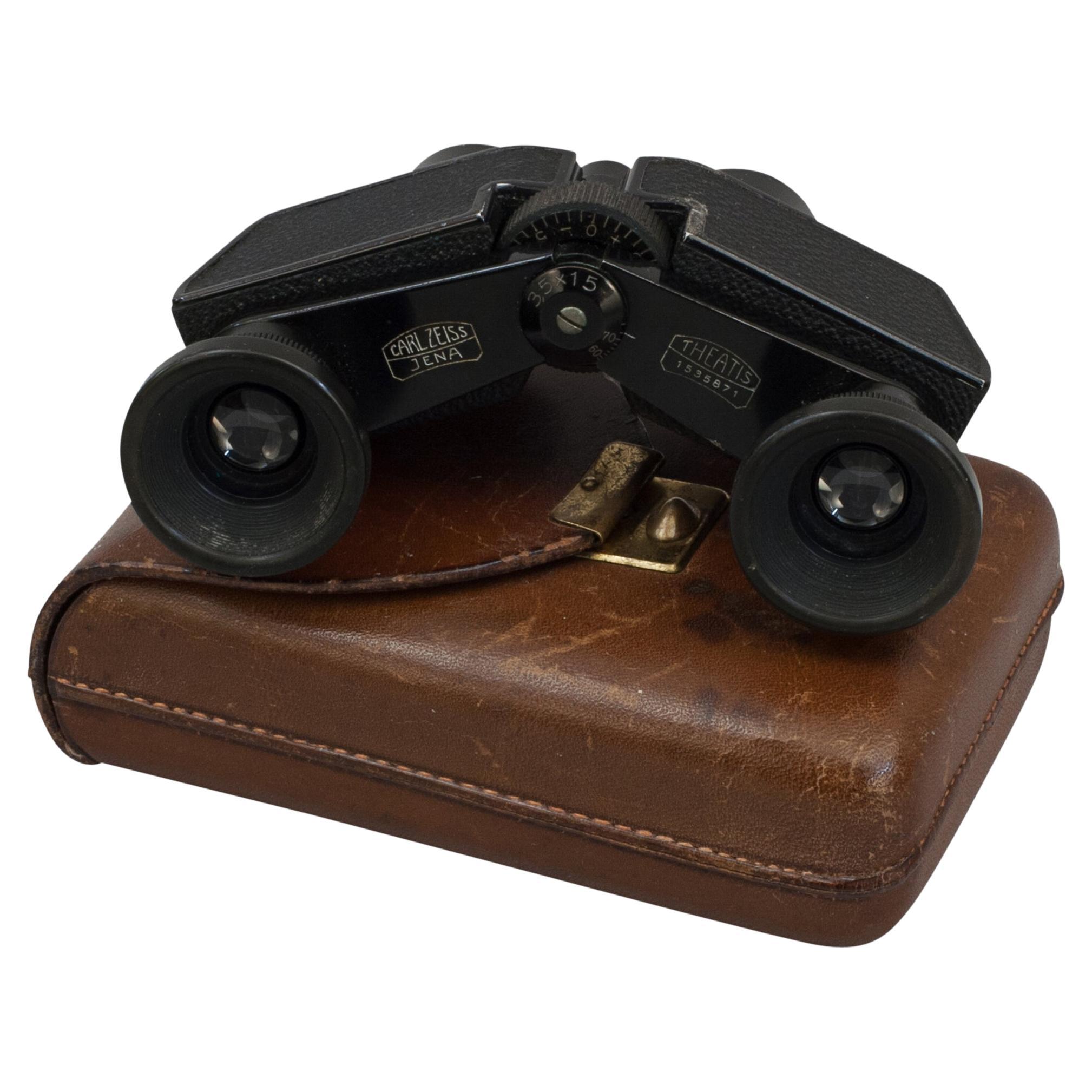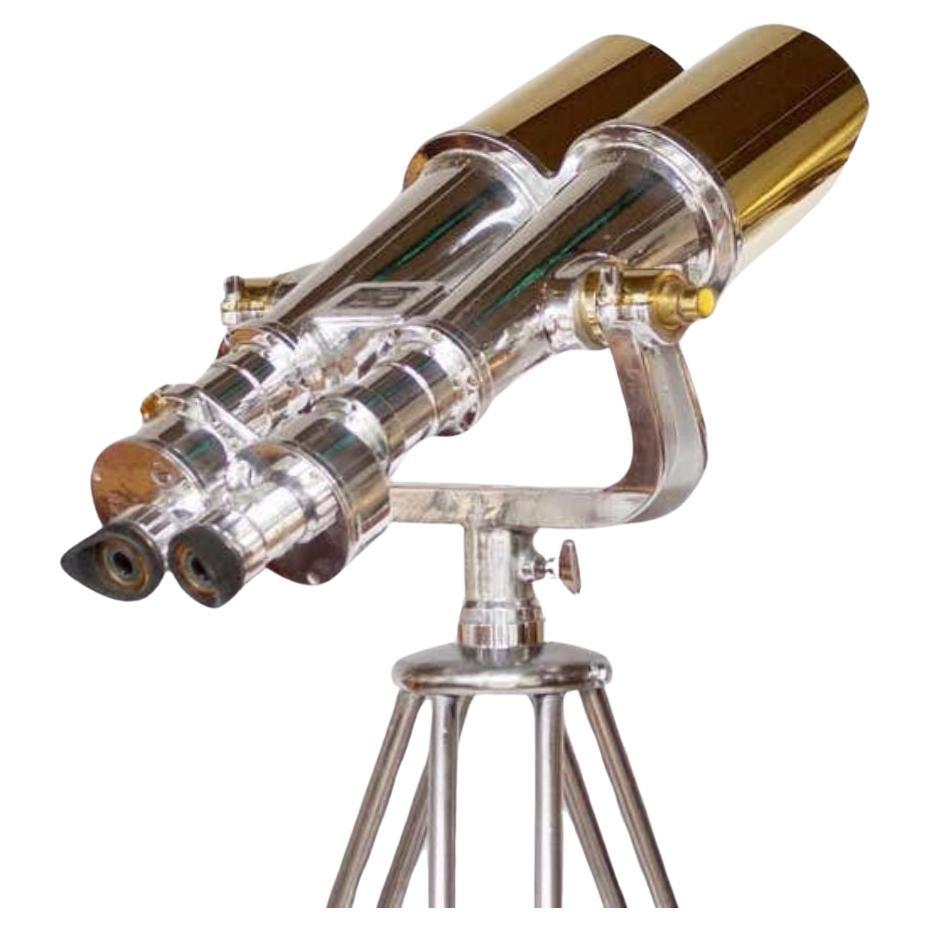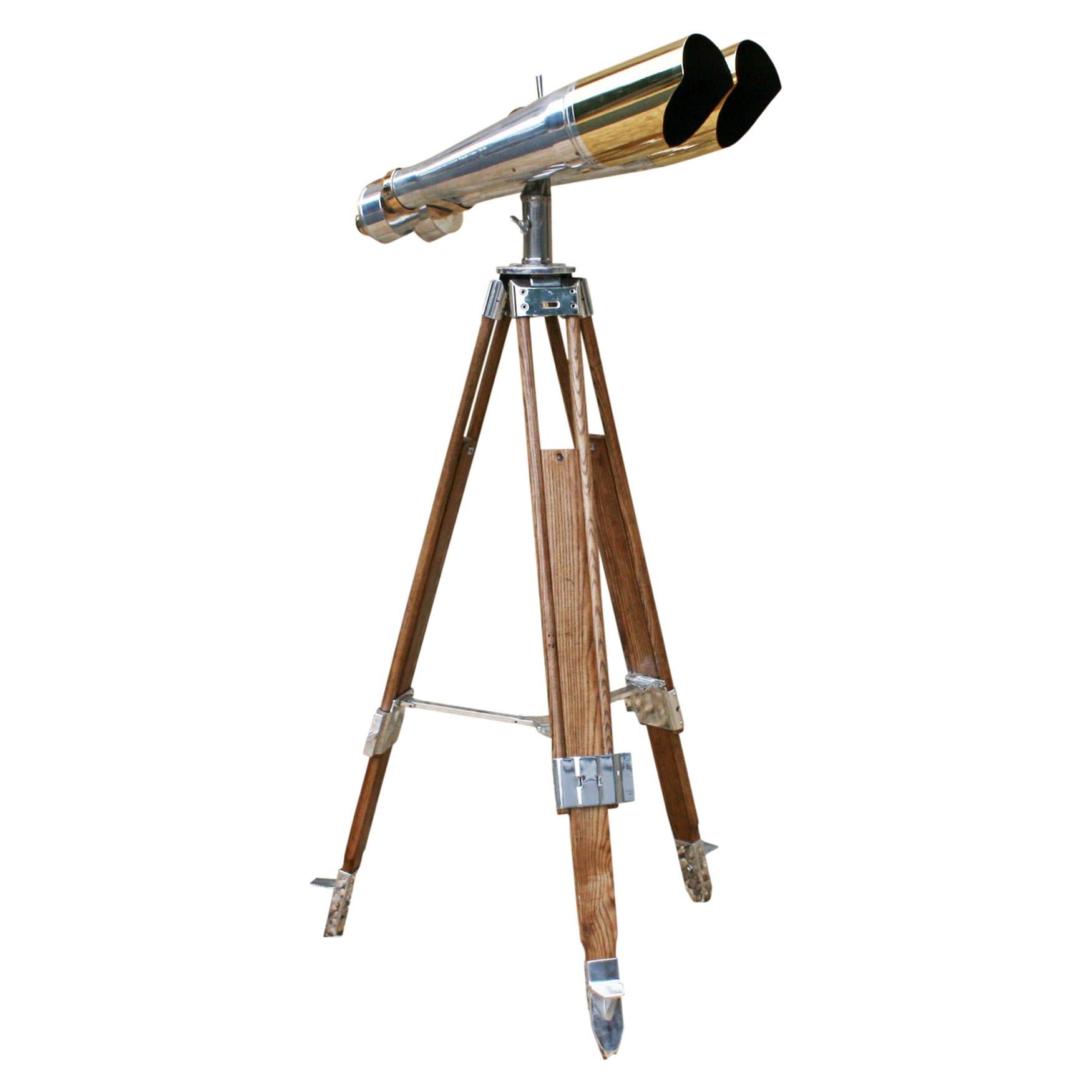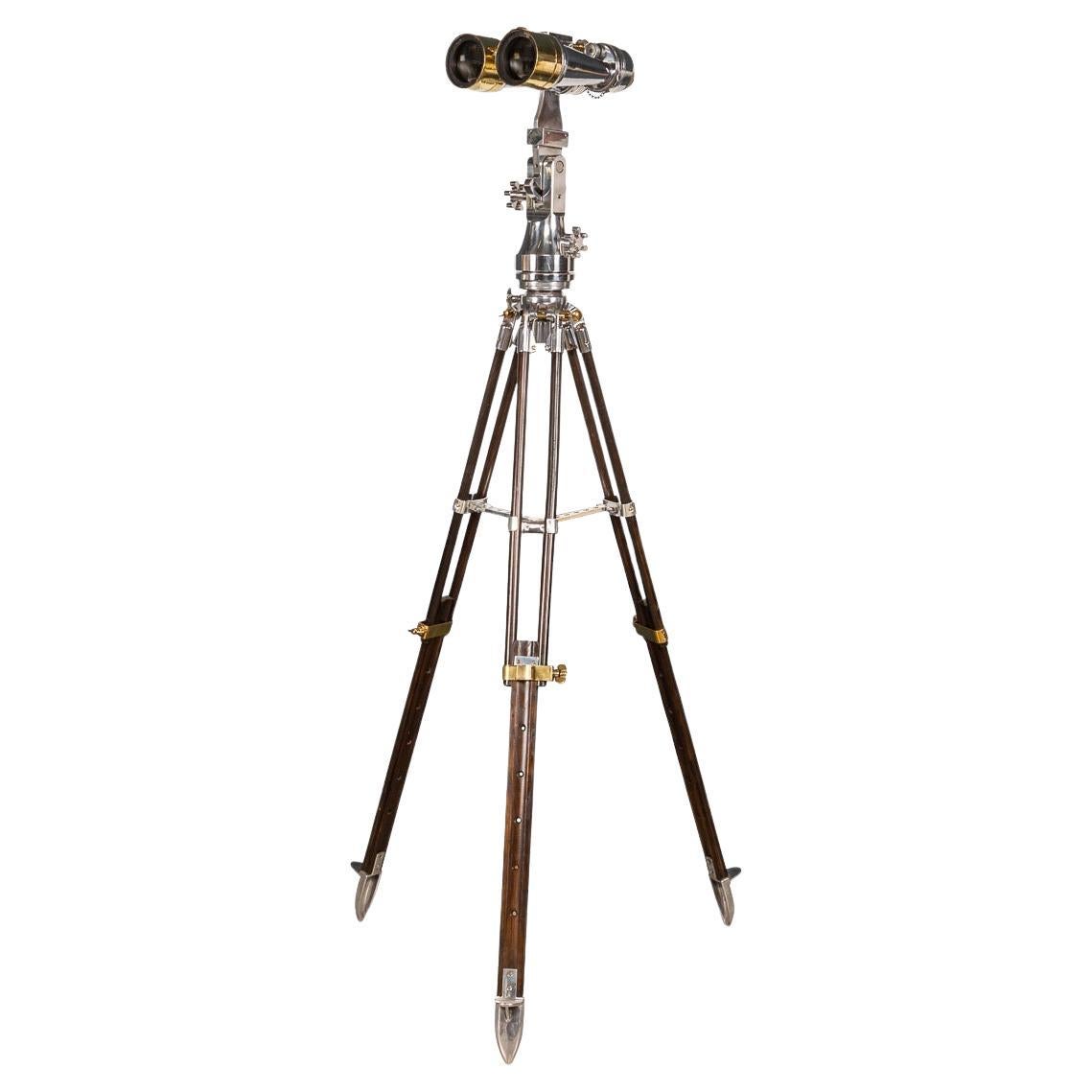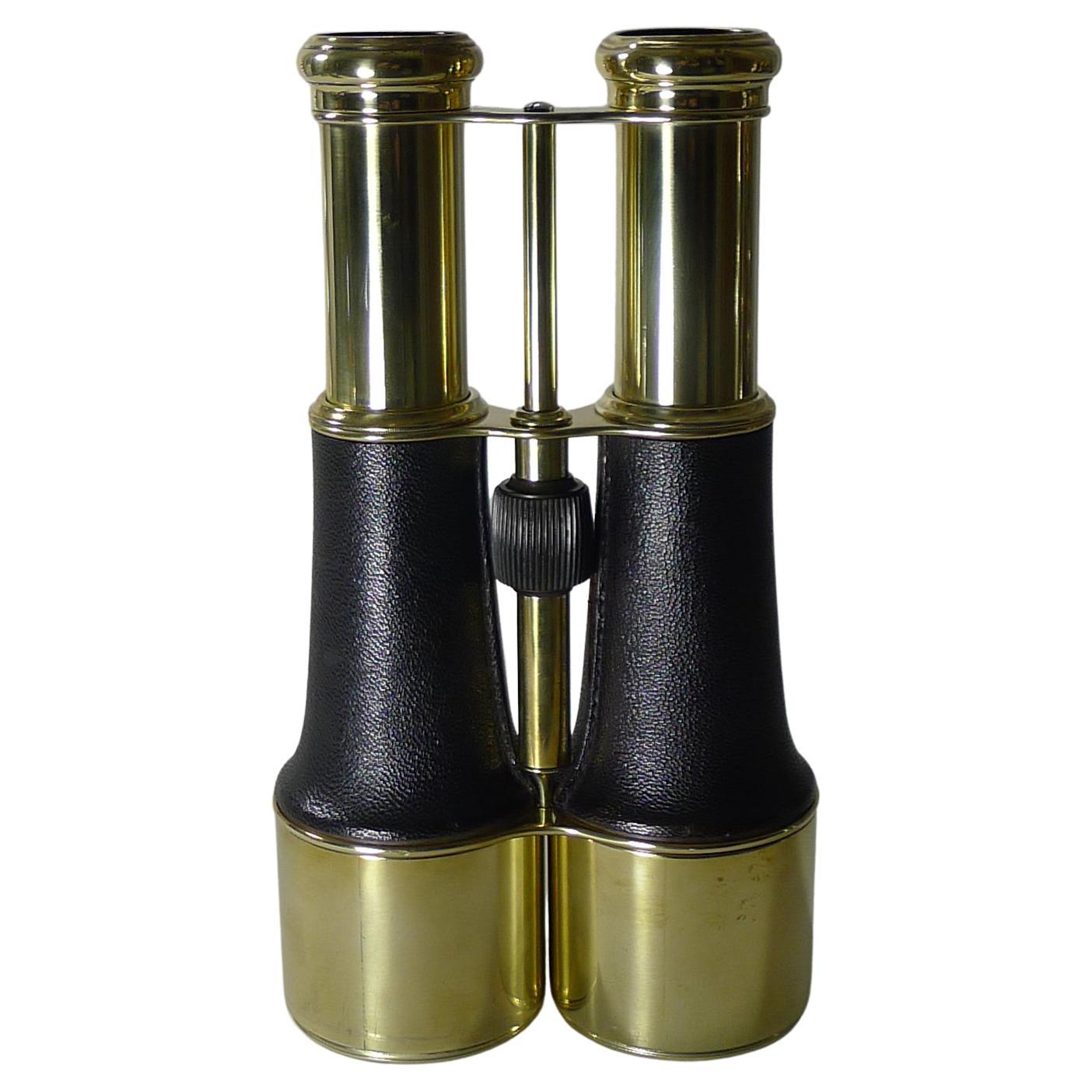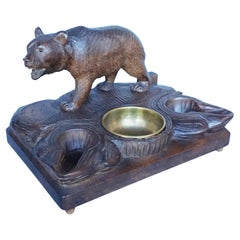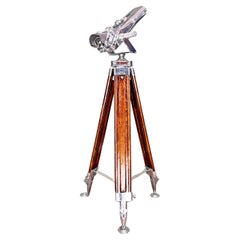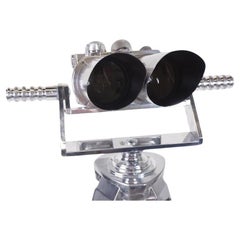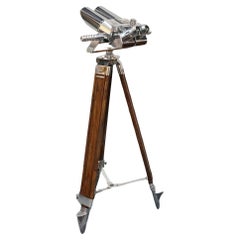
Emil Busch for Carl Zeiss WW11 Observation Binoculars
View Similar Items
Want more images or videos?
Request additional images or videos from the seller
1 of 13
Emil Busch for Carl Zeiss WW11 Observation Binoculars
About the Item
- Dimensions:Height: 14.97 in (38 cm)Width: 8.67 in (22 cm)Depth: 13.78 in (35 cm)
- Materials and Techniques:
- Place of Origin:
- Period:
- Date of Manufacture:1940
- Condition:Repaired: Optics Fully Restored. Wear consistent with age and use.
- Seller Location:Forest Row, GB
- Reference Number:1stDibs: LU2523336813632
About the Seller
5.0
Platinum Seller
These expertly vetted sellers are 1stDibs' most experienced sellers and are rated highest by our customers.
Established in 1985
1stDibs seller since 2017
165 sales on 1stDibs
Typical response time: 3 hours
More From This SellerView All
- 10 X 80 WW11 Marine Binoculars by ZeissLocated in Forest Row, East SussexA pair of 10x80 observation binoculars designed by Emil Busch Optical Industries of Rathenow. WW11 naval binoculars with eyepieces set at 45 degrees. Set on a later extending wood an...Category
Early 20th Century German Nautical Objects
MaterialsChrome
- Fuji Meibo 25x150 WW11 Naval/Marine BinocularsBy Fuji MeiboLocated in Forest Row, East SussexA large pair of chromed and polished metal and brass Fuji Meibo 25x150 Naval Binoculars. Set on a later impressive polished metal stand. Fuji Meibo 25x150 stamp to top. 25x magnifi...Category
Early 20th Century Japanese Nautical Objects
MaterialsBrass, Chrome
- Finely Carved 'Black Forest' Pipe StandBy Black ForestLocated in Forest Row, East SussexA finely carved "Black Forest' pipe stand. Carved Lindenwood with a single bear standing over a naturalistic base with the pipe holders and astray to fron...Category
Antique Late 19th Century Swiss Black Forest Tobacco Accessories
MaterialsWood
- An Art Deco Vase Designed by Kieth Murray for WedgewoodBy WedgwoodLocated in Forest Row, East SussexAn Art Deco cream earthenware vase. Designed by K.Murray for Wedgwood. Stamped to base. Origin: English Date: Circa 1935Category
Early 20th Century Art Deco Ceramics
MaterialsStoneware
- Vintage Keith Murray Designed Art Deco Sugar Sifter for Mappin & WebbBy Keith MurrayLocated in Forest Row, East SussexAn Art Deco silver plated sugar sifter designed by Keith Murray for Mappin & Webb. Dimensions: H 17cm D 5.5cm Origin: English Date: circa 1935 Item Number: 1003236.Category
Early 20th Century English Art Deco Sheffield and Silverplate
MaterialsSilver Plate
- Earthenware Model of a Duiker by John Skeaping for Wedgwood, circa 1960By WedgwoodLocated in Forest Row, East SussexAn earthenware model of a Duiker by John Skeaping for Wedgwood. Cream glazed with printed Wedgwood marks to underneath. Dimensions: H 12cm, W 18cm, D 10cm Origin: English ...Category
20th Century English Ceramics
MaterialsEarthenware
You May Also Like
- Carl Zeiss 12 x 60 German Observation Binoculars, Second World WarLocated in Colorado Springs, COThis is an exceptional 20th century WWII German 12x60 observation binocular, presented on an adjustable wooden tripod. The binoculars were manufactured by the company Carl Zeiss. Carl Zeiss is a German manufacturer of optical systems, founded in Jena, Germany in 1846 by optician Carl Zeiss. These binoculars were used for long-watch land and sky observation by German forces between 1939 and 1945. The binoculars were ruggedly constructed to withstand the rigors of field service. They were used for various tasks, including daylight observation of enemy troop movements, directing fire from artillery toward advancing enemy troops and armor, directing fire at enemy aircraft, and night observation. The angle of the binoculars allowed the observer to sustain watch for long periods of time. The angle also permitted a necessary versatility, as the watchman was able to perform both higher aerial observation and observation of enemy troops on the same visual plane as the watchman. The wartime code for this binocular, “blc”, is engraved on the side of the binocular. “blc” is the secret manufacturing code assigned to Zeiss by the German Army Ordnance Department. The use of the “blc” code instead of the company’s normal logo on the side was a precautionary one, to ensure the secrecy of factory production should the binocular fall into enemy hands. World War II binoculars are true military weapons, designed for defense and reconnaissance. They were never designed for civilian use, and were constructed without cost in mind, as the reliability of the optics far outweighed the monetary cost. The eyepieces can be adjusted for focus and the distance between your eyes with a turn of a knob, as can the shade settings for the lenses. This particular binocular also possesses sun filters. It was a known military tactic to fly in line with the sunlight and filters helped to cut the glare of the sun to increase plane and bomber tracking. This stunning antique...Category
Vintage 1940s Scientific Instruments
MaterialsMetal
- 1940's WW2 Carl Zeiss BLC 12x60 'T' Flak BinocularsBy Carl ZeissLocated in Leicester, LeicestershireCarl Zeiss blc Flak 12 x 60 'T' binoculars. A beautiful set of WW2 binoculars in excellent condition made in Germany during World War 2. These were designed to be used in conjunctio...Category
Vintage 1940s German Industrial Historical Memorabilia
MaterialsAluminum
- WWII Carl Zeiss BinocularsBy Carl ZeissLocated in Telluride, COThese WWII optics have been originally restored in a time-consuming process to reveal a crystal clear Image. Externally, hand stripping the paint inch by inch and polishing to the mo...Category
Vintage 1930s German Late Victorian Aviation Objects
MaterialsAluminum
$24,000 - Pair of Carl Zeiss Binoculars, 12 X 60By Carl ZeissLocated in Oxfordshire, GBWWII Carl Zeiss 12 x 60 Binoculars. A pair of rare Second World War Carl Zeiss 12 x 60 German ex military binocular director telescope for a 4 m rangefinder. These observation binoculars are mounted onto a new aluminium cradle and gimbal so the whole apparatus can rotate on the vintage adjustable wooden Zeiss tripod. The binoculars are marked 'blc, Beob-F. 12 X 60, fÜr, Em 4m R40, Nr.93, No.239032. They are manufactured by Carl Zeiss with blc being the secret manufacturing code assigned to Zeiss by the German Army Ordnance Department. Adjustment of the interocular distance is by a lever under the left-hand ocular that causes rotation of a circular plate, in which it is eccentrically mounted. It has additional shade settings for the lenses by turning the knob on the left, Farbgläser, bright, medium and dark, the eyepieces can be focused individually. When these WW2 binoculars were in operation connectors for the desiccating apparatus could be fitted on the sides 'Trocken - luft' (dry air). The optics give outstanding visual clarity. The rubber brow rest (eye rest) can be folded sideways or upwards. Sunshades are fitted that can be flipped into place. This is a fine pair of binoculars with a highly polished finish, giving it a sculptural look. The last image showing is a pair of WW2 photographs...Category
Mid-20th Century German Aviation Objects
MaterialsMetal
- WWII Carl Zeiss Anti-Aircraft Kriegsmarine binocularsBy Carl ZeissLocated in Telluride, COThis is an exceptional 20th century WWII German 12x60 Kriegsmarine binocular, presented on an adjustable wooden or chrome Tripod. The binoculars were manufactured by the company Carl...Category
Vintage 1940s German Other Aviation Objects
MaterialsAluminum
- Carl Zeiss Binoculars 3.5 X 15, in Leather CaseLocated in Oxfordshire, GBCompact 3.5 x 15 Carl Zeiss Jena Binoculars. A good pair of small compact usable Carl Zeiss Jena hand held binoculars in original Zeiss leather case. The binoculars are marked, Carl ...Category
Mid-20th Century German Scientific Instruments
MaterialsLeather
Recently Viewed
View AllMore Ways To Browse
Bronze Porthole
120 White Wall Clock
Enamel Yacht Club
Antique Divers Helmet
Antique Miners Hat
Deep Sea Divers Helmet
Life Ring Buoy
Nautical Walking Stick
Rb Spencer
Vintage Spyglass
Compass Handheld
David Seyfried
Joe Selby
Ship Air Vent
Vintage Coastal Monumental Tridacna Gigas Giant Clam Shell
Vintage Planimeter
Antique Fishing Reels Uk
Boatswain Whistle

